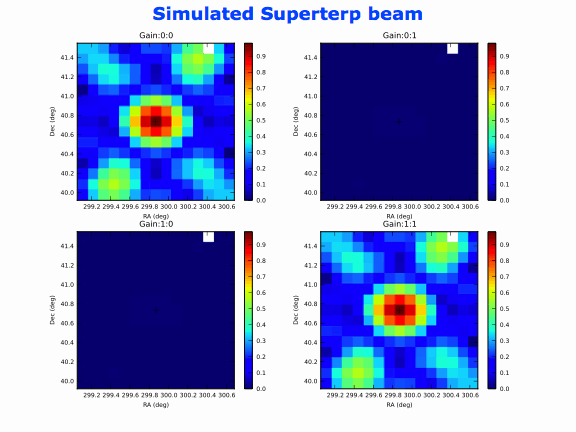Daily Image
16-08-2012Combining LOFAR superterp stations for imaging observations
| Submitter: | George Heald and Joris van Zwieten |
| Description: | The LOFAR superterp is the site of 12 closely spaced HBA substations, all of which share a common clock. This leads to the exciting possibility of combining them into one large (effective) superterp station, as has been demonstrated for beamformed observations. This is now possible for interferometric observations thanks to improvements in the software components of the LOFAR Imaging Pipeline. In particular, our pre-processing engine (NDPPP for the acronym lovers out there) is now capable of combining the baseline data in the proper way, and the calibration engine (BBS) knows how to understand this artificial station and properly predict its behavior in an observation. (So too does the LOFAR imager, though its behavior has not been fully tested yet.) The image today shows a comparison between the observed and predicted sensitivity pattern produced by combining all 12 HBA superterp substations, i.e. the virtual superterp beam. This was obtained using a beam mapping observation of Cygnus A. The beam pattern is shown for an observation at 150 MHz. Note that the main lobe of the beam is only about 20 arcminutes across, consistent with the expectation for a station with an effective diameter of 320 meters. The differences in the sidelobe pattern are attributable to the slight phase differences that still exist between the individual substations on the superterp. Those offsets are easily measured and have been found to be quite stable on long timescales, so this is a problem that can and will be solved (in the "tune up" called for by the beamforming group!). This technique is very useful for long baseline observations, because baselines using this virtual superterp station will be about 3.5 times more sensitive than baselines using the individual core substations alone. That will help substantially in calibrating and imaging at (sub)arcsecond resolution! |
| Copyright: | ASTRON/LOFAR |
| Tweet |  |
